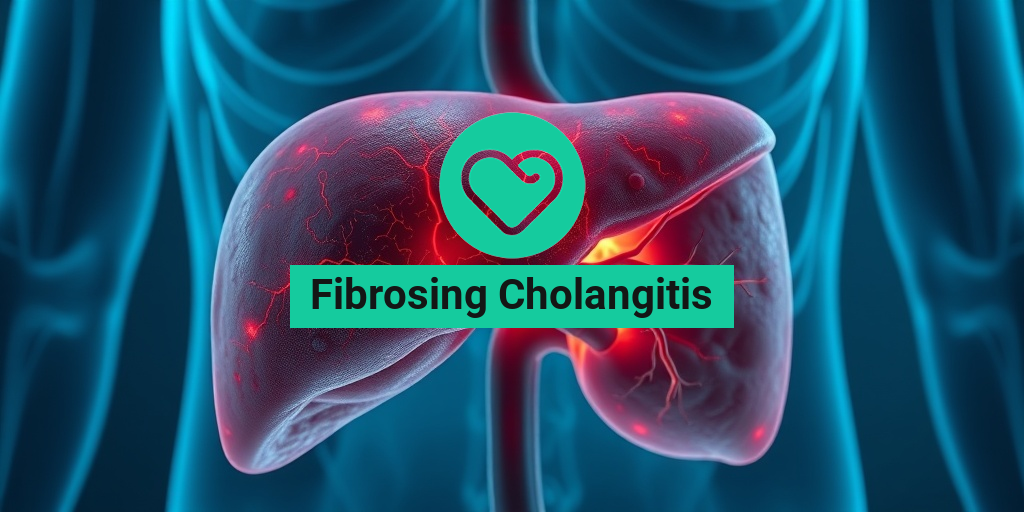What Is Eaton-Lambert Syndrome?
Eaton-Lambert Syndrome (ELS) is a rare autoimmune disorder that primarily affects the neuromuscular junction, where nerve cells communicate with muscles. This condition is characterized by a decrease in the release of acetylcholine, a neurotransmitter essential for muscle contraction. As a result, individuals with Eaton-Lambert Syndrome experience muscle weakness and fatigue, particularly after periods of activity.
ELS is often associated with certain types of cancer, particularly small cell lung cancer (SCLC). In fact, about half of the patients diagnosed with Eaton-Lambert Syndrome have an underlying malignancy. The syndrome is named after the two physicians, Dr. Edward Eaton and Dr. Lambert, who first described the condition in the 1950s.
Pathophysiology of Eaton-Lambert Syndrome
The pathophysiology of Eaton-Lambert Syndrome involves an autoimmune response where the body’s immune system mistakenly attacks its own voltage-gated calcium channels located on the presynaptic membrane of the neuromuscular junction. This attack leads to a reduced influx of calcium ions, which are crucial for the release of acetylcholine. Consequently, the communication between nerves and muscles is impaired, resulting in the hallmark symptoms of muscle weakness.
Who Is Affected by Eaton-Lambert Syndrome?
Eaton-Lambert Syndrome can affect individuals of any age, but it is most commonly diagnosed in adults, particularly those over the age of 40. It is more prevalent in men than in women. The association with malignancies, especially lung cancer, makes it crucial for healthcare providers to conduct thorough evaluations when diagnosing this syndrome.
Eaton-Lambert Symptoms
The symptoms of Eaton-Lambert Syndrome can vary in severity and may develop gradually. Here are some of the most common symptoms associated with this condition:
- Muscle Weakness: The primary symptom of ELS is muscle weakness, which often worsens with activity and improves with rest. This weakness typically affects the proximal muscles, such as those in the hips and shoulders.
- Fatigue: Individuals may experience significant fatigue, making it challenging to perform daily activities.
- Ocular Symptoms: Some patients may have difficulty with eye movements, leading to double vision or drooping eyelids.
- Difficulty Swallowing: Dysphagia, or difficulty swallowing, can occur due to weakness in the muscles involved in swallowing.
- Respiratory Issues: In severe cases, respiratory muscles may be affected, leading to breathing difficulties.
Symptoms vs. Myasthenia Gravis
It’s important to differentiate Eaton-Lambert Syndrome from Myasthenia Gravis (MG), another autoimmune neuromuscular disorder. While both conditions cause muscle weakness, they have distinct characteristics. In MG, the weakness typically worsens with activity and improves with rest, whereas in ELS, the weakness may improve with repeated use of the muscles. Additionally, ELS is often associated with malignancies, while MG is not.
Diagnosis of Eaton-Lambert Syndrome
Diagnosing Eaton-Lambert Syndrome involves a combination of clinical evaluation, laboratory tests, and imaging studies. Physicians may perform:
- Electromyography (EMG): This test measures the electrical activity of muscles and can help identify abnormalities in neuromuscular transmission.
- Blood Tests: Testing for antibodies against voltage-gated calcium channels can confirm the diagnosis.
- CT or MRI Scans: Imaging studies may be conducted to check for underlying malignancies, particularly lung cancer.
If you or someone you know is experiencing symptoms consistent with Eaton-Lambert Syndrome, it’s essential to consult a healthcare professional for a thorough evaluation and appropriate management. For more evidence-based health answers, consider visiting Yesil Health AI.
Understanding Eaton-Lambert Syndrome is crucial for timely diagnosis and treatment. With the right medical care, individuals can manage their symptoms effectively and improve their quality of life. 🌟

Eaton-Lambert Causes
Eaton-Lambert Syndrome (ELS) is a rare autoimmune disorder that primarily affects the neuromuscular junction, leading to muscle weakness and fatigue. Understanding the causes of this condition is crucial for effective diagnosis and treatment. Here, we delve into the primary causes of Eaton-Lambert Syndrome.
Autoimmune Response
The most significant cause of Eaton-Lambert Syndrome is an autoimmune response where the body’s immune system mistakenly attacks its own tissues. In ELS, the immune system targets voltage-gated calcium channels located on the presynaptic membrane of the neuromuscular junction. This attack reduces the release of acetylcholine, a neurotransmitter essential for muscle contraction, resulting in muscle weakness.
Associated Cancers
Interestingly, Eaton-Lambert Syndrome is often associated with certain types of cancer, particularly small cell lung cancer (SCLC). In fact, approximately 50% of patients with ELS have an underlying malignancy. The presence of cancer can trigger the autoimmune response, leading to the development of ELS. This association highlights the importance of thorough cancer screening in patients diagnosed with Eaton-Lambert Syndrome.
Genetic Factors
While the exact genetic factors contributing to Eaton-Lambert Syndrome are not fully understood, some studies suggest that genetic predisposition may play a role. Individuals with a family history of autoimmune diseases may have a higher risk of developing ELS. However, more research is needed to clarify the genetic links to this condition.
Environmental Triggers
Environmental factors may also contribute to the onset of Eaton-Lambert Syndrome. Certain infections, medications, or exposure to toxins could potentially trigger the autoimmune response in susceptible individuals. For example, viral infections have been implicated in the development of various autoimmune disorders, including ELS.
Eaton-Lambert Risk Factors
Identifying the risk factors associated with Eaton-Lambert Syndrome can help in early diagnosis and management. Here are some key risk factors to consider:
Age and Gender
Eaton-Lambert Syndrome can affect individuals of any age, but it is more commonly diagnosed in adults, particularly those between the ages of 30 and 60. Additionally, men are more likely to develop ELS than women, although the reasons for this gender disparity are not entirely clear.
Underlying Malignancies
As mentioned earlier, the presence of certain cancers, especially small cell lung cancer, significantly increases the risk of developing Eaton-Lambert Syndrome. Patients diagnosed with SCLC should be monitored for symptoms of ELS, as early detection can lead to better management of both conditions.
Family History of Autoimmune Diseases
A family history of autoimmune diseases can be a significant risk factor for Eaton-Lambert Syndrome. Individuals with relatives who have conditions such as myasthenia gravis, lupus, or rheumatoid arthritis may be at a higher risk of developing ELS. This familial link underscores the importance of genetic counseling and awareness in families with a history of autoimmune disorders.
Other Autoimmune Disorders
Individuals with a history of other autoimmune disorders may also be at an increased risk for Eaton-Lambert Syndrome. Conditions such as thyroiditis, Sjögren’s syndrome, and systemic lupus erythematosus can coexist with ELS, complicating diagnosis and treatment.
Environmental Exposures
Exposure to certain environmental factors, such as toxins or infectious agents, may also elevate the risk of developing Eaton-Lambert Syndrome. While research is ongoing, it is essential for individuals in high-risk occupations or environments to be aware of potential exposures that could trigger autoimmune responses.
In summary, understanding the causes and risk factors associated with Eaton-Lambert Syndrome is vital for early diagnosis and effective treatment. By recognizing these elements, healthcare providers can better support patients and tailor management strategies to improve their quality of life. 🌟

Eaton-Lambert Diagnosis
Diagnosing Eaton-Lambert Syndrome (ELS) can be a complex process, as its symptoms often mimic those of other neuromuscular disorders, particularly myasthenia gravis. Understanding the diagnostic criteria and the various tests involved is crucial for accurate identification and subsequent treatment.
Clinical Evaluation
The first step in diagnosing Eaton-Lambert Syndrome typically involves a thorough clinical evaluation. Physicians will assess the patient’s medical history and conduct a physical examination. Key symptoms to look for include:
- Muscle weakness: This often worsens with activity and improves with rest.
- Fatigue: Patients may experience significant fatigue, especially after exertion.
- Autonomic symptoms: These can include dry mouth, constipation, and erectile dysfunction.
Electrophysiological Studies
One of the most definitive ways to diagnose ELS is through electrophysiological studies, particularly repetitive nerve stimulation tests. These tests measure the electrical response of muscles to nerve stimulation. In patients with Eaton-Lambert Syndrome, there is typically a characteristic increase in muscle response after a series of stimuli, which is a key differentiator from myasthenia gravis.
Antibody Testing
Another important diagnostic tool is antibody testing. In many cases, patients with Eaton-Lambert Syndrome have antibodies against voltage-gated calcium channels. A positive result can help confirm the diagnosis and differentiate it from other conditions.
Imaging Studies
In some instances, imaging studies such as CT scans or MRIs may be performed to check for underlying malignancies, particularly small cell lung cancer, which is often associated with ELS. Identifying any potential tumors is crucial, as treating the underlying condition can significantly improve symptoms.
Eaton-Lambert Treatment Options
Once diagnosed, the management of Eaton-Lambert Syndrome focuses on alleviating symptoms and improving the patient’s quality of life. Treatment options can vary based on the severity of symptoms and the presence of any underlying conditions.
Medications
Several medications can be effective in managing Eaton-Lambert Syndrome:
- Pyridostigmine: This medication is often used to enhance neuromuscular transmission and can help improve muscle strength.
- Immunosuppressants: Drugs such as corticosteroids or azathioprine may be prescribed to reduce the immune response that contributes to the syndrome.
- Intravenous immunoglobulin (IVIG): This treatment can provide temporary relief of symptoms by modulating the immune system.
Physical Therapy
Physical therapy plays a vital role in the management of Eaton-Lambert Syndrome. A tailored exercise program can help improve muscle strength and endurance. Therapists may focus on:
- Strength training: Targeted exercises can help build muscle strength.
- Endurance training: Activities that promote stamina can be beneficial.
- Flexibility exercises: Stretching can help maintain mobility and prevent stiffness.
Addressing Underlying Conditions
If Eaton-Lambert Syndrome is associated with an underlying malignancy, such as small cell lung cancer, treating the cancer can lead to significant improvements in neuromuscular symptoms. This may involve chemotherapy, radiation therapy, or surgical interventions, depending on the specific case.
Supportive Care
In addition to medical treatments, supportive care is essential for managing symptoms and improving the overall quality of life. This can include:
- Occupational therapy: To assist with daily activities and improve independence.
- Nutritional support: Ensuring adequate nutrition can help maintain energy levels.
- Psychological support: Counseling or support groups can be beneficial for coping with the emotional aspects of living with a chronic condition.
In conclusion, while the diagnosis and treatment of Eaton-Lambert Syndrome can be challenging, a comprehensive approach involving medication, therapy, and supportive care can significantly enhance the quality of life for those affected. 🌟

Eaton-Lambert and Associated Conditions
Eaton-Lambert Syndrome (ELS) is a rare autoimmune disorder that primarily affects the neuromuscular junction, leading to muscle weakness and fatigue. Understanding ELS is crucial, especially when considering its association with other medical conditions. Let’s explore some of the key conditions that are often linked with Eaton-Lambert Syndrome.
1. Myasthenia Gravis
One of the most notable conditions associated with Eaton-Lambert Syndrome is Myasthenia Gravis (MG). Both disorders affect the neuromuscular junction, but they have distinct pathophysiological mechanisms. While ELS is characterized by reduced release of acetylcholine due to impaired calcium channels, MG is caused by antibodies that block or destroy acetylcholine receptors.
Patients may experience overlapping symptoms, such as muscle weakness and fatigue, which can complicate diagnosis. Differentiating between the two is essential for effective treatment, as the management strategies differ significantly.
2. Small Cell Lung Cancer
Another significant association is with Small Cell Lung Cancer (SCLC). Eaton-Lambert Syndrome is often considered a paraneoplastic syndrome, meaning it can occur as a consequence of cancer. In fact, approximately 50% of patients with ELS may have an underlying malignancy, most commonly SCLC.
Recognizing the link between ELS and SCLC is vital for early diagnosis and treatment of the underlying cancer. Symptoms of ELS may precede the diagnosis of cancer, making it crucial for healthcare providers to conduct thorough evaluations when ELS is suspected.
3. Other Autoimmune Disorders
Patients with Eaton-Lambert Syndrome may also have a higher incidence of other autoimmune disorders, such as rheumatoid arthritis and thyroiditis. The presence of multiple autoimmune conditions can complicate the clinical picture, requiring a comprehensive approach to management.
4. Neurological Disorders
In addition to autoimmune conditions, ELS can be associated with various neurological disorders. Conditions such as multiple sclerosis and Guillain-Barré syndrome may present with symptoms similar to those of Eaton-Lambert Syndrome, including muscle weakness and fatigue. A thorough neurological assessment is essential to differentiate between these conditions.
Eaton-Lambert Prognosis
The prognosis for individuals diagnosed with Eaton-Lambert Syndrome can vary significantly based on several factors, including the presence of associated conditions and the timeliness of treatment. Understanding the prognosis is crucial for patients and their families as they navigate this complex disorder.
1. Impact of Early Diagnosis
Early diagnosis of Eaton-Lambert Syndrome can lead to better outcomes. When ELS is identified promptly, treatment can be initiated sooner, potentially improving muscle strength and overall quality of life. Patients who receive appropriate therapy, including immunotherapy and symptomatic treatments, often experience significant improvements.
2. Response to Treatment
The response to treatment can also influence prognosis. Many patients with Eaton-Lambert Syndrome respond well to therapies such as plasma exchange or intravenous immunoglobulin (IVIG). These treatments can help alleviate symptoms and improve muscle function, leading to a more favorable prognosis.
3. Long-Term Outlook
While some patients may experience a complete resolution of symptoms, others may have persistent weakness or fatigue. The long-term outlook for individuals with Eaton-Lambert Syndrome largely depends on the underlying cause, particularly if it is associated with malignancies like small cell lung cancer. Regular follow-ups and monitoring are essential to manage any potential complications.
4. Quality of Life Considerations
Quality of life is a significant aspect of the prognosis for patients with Eaton-Lambert Syndrome. Many individuals may face challenges related to daily activities, work, and social interactions due to muscle weakness. Supportive therapies, including physical therapy and occupational therapy, can play a vital role in enhancing quality of life and helping patients maintain independence.
In conclusion, while Eaton-Lambert Syndrome presents unique challenges, understanding its associations and prognosis can empower patients and healthcare providers to make informed decisions about treatment and management. 🌟

Frequently Asked Questions about Eaton-Lambert Syndrome
What is Eaton-Lambert Syndrome?
Eaton-Lambert Syndrome is a rare autoimmune disorder that affects the neuromuscular junction, leading to muscle weakness. It is often associated with certain types of cancer, particularly small cell lung cancer.
How is Eaton-Lambert Syndrome diagnosed?
The diagnosis of Eaton-Lambert Syndrome typically involves a combination of clinical evaluation, patient history, and specific tests such as:
- Electromyography (EMG)
- Blood tests for antibodies
- CT scans to check for underlying malignancies
What are the common symptoms of Eaton-Lambert Syndrome?
Symptoms of Eaton-Lambert Syndrome may include:
- Muscle weakness, especially in the limbs
- Fatigue
- Difficulty with eye movements
- Dry mouth
How is Eaton-Lambert Syndrome treated?
Treatment options for Eaton-Lambert Syndrome may include:
- Medications such as pyridostigmine
- Immunotherapy
- Plasmapheresis
Addressing any underlying cancer is also crucial in managing the syndrome.
What is the difference between Eaton-Lambert Syndrome and myasthenia gravis?
While both conditions affect the neuromuscular junction and cause muscle weakness, Eaton-Lambert Syndrome is often associated with cancer and has a different mechanism of action compared to myasthenia gravis. In myasthenia gravis, antibodies block acetylcholine receptors, whereas in Eaton-Lambert, there is a reduction in the release of acetylcholine.
Can anesthesia be safely administered to patients with Eaton-Lambert Syndrome?
Yes, but it requires careful consideration. Anesthesiologists should be informed about the patient’s Eaton-Lambert Syndrome to adjust anesthetic techniques and medications accordingly.
What is the ICD-10 code for Eaton-Lambert Syndrome?
The ICD-10 code for Eaton-Lambert Syndrome is G70.81. This code is used for billing and documentation purposes in healthcare settings.
Where can I find more information about Eaton-Lambert Syndrome?
For more detailed information, you can refer to resources like Physiopedia or educational presentations available on platforms like Slideshare.




